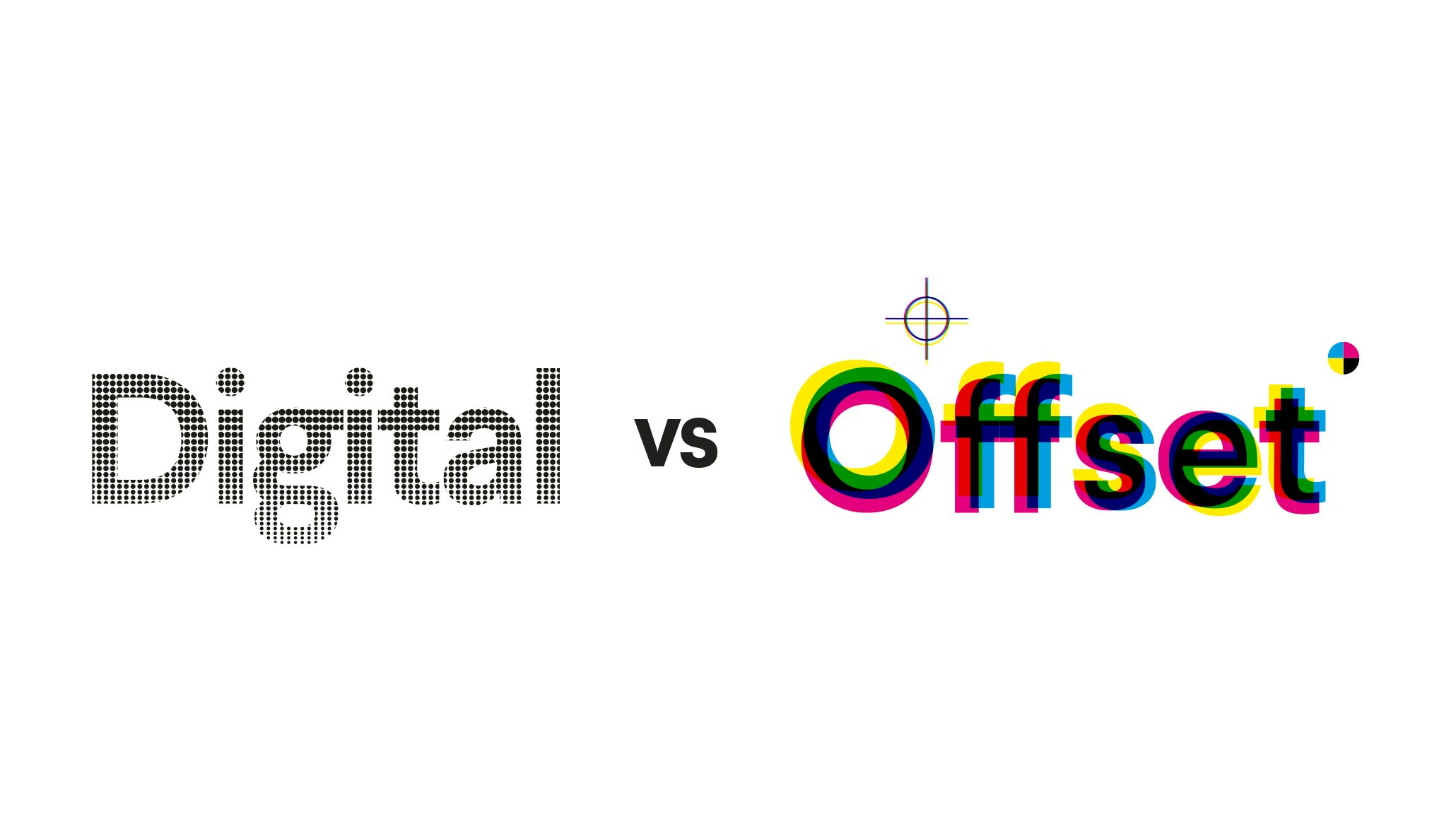The basic dissimilarities among the usage of differences between digital and offset printing are noteworthy before using the said differences. Digital printing evidences electronic files that directly print the content onto chosen material through a direct printer attachment. On the other hand, the offset method entails transferring ink from the plate to a rubber blanket, after which they are applied to the printing surface. In the coming sections, we will explore the answer to choosing digital or offset printing.

Understanding Digital Printing
Popular over the years for short print runs and print-on-demand services, digital printing has been a cost-effective as well as time-efficient proposition to authors and publishers with limited budgets or those that desire quick turnaround times.
The Benefits of Digital Printing
Cost-Effectiveness for Small Print Runs
An advantage of digital printing is that it’s cost-effective for small print quantities. Compared to offset printing, with higher setup costs, digital printing allows you to print only the number of books you need considering unnecessary expenses.
Quick Turnaround Time
Digital printing eliminates the need for printing plates and complex setup processes. Consequently, it offers a much faster turnaround time, making it ideal for meeting tight publishing deadlines.
Variable Data Printing
You can personalize each copy of your book with digital printing. Variable data printing allows you to customize elements like text and images, a la carte style adding that little personalized touch to individual copies.
Print-on-Demand
Digital printing’s print-on-demand features especially benefit self-published authors and small publishers. You can print copies as needed, greatly reducing the risk of overstocking and minimizing storage costs.
Drawbacks of Digital Printing
While digital printing has many benefits, its limitations may affect your book printing decisions.
Limited Color Accuracy
Digital printing uses the CMYK color model and may sometimes result in color variations and inaccuracies compared to offset printing, especially when dealing with particular shades or spot colors.
Higher Per-Unit Cost for Large Print Runs
The per-unit cost of digital printing can be higher than offset printing when printing many books. Hence, offsets are more economical than printings.
An Overview of Offset Printing
Offset printing has long been the traditional choice for book printing. It involves transferring ink from a metal plate to a rubber blanket before applying it to the printing surface.
The Advantages of Offset Printing
Superior Color Reproduction
Offset printing offers outstanding color accuracy, bearing in mind that it can reproduce images and graphics with outstanding clarity. This is a preferred choice for high-quality printing.
Economical for Large Print Runs
As the print quantity is increased, offset printing is cost-effective. It has been the most liked choice by authors and publishers intending to print many books.
Wide Range of Paper Options
Offset printing offers you countless paper choices – from different textures, weights, and colors of paper to give your book a premium feeling with a professional look.
Limitations of Offset Printing
Offset printing may be the conventional choice, but it does have some limitations worth considering.
Slower Turnaround Time
The setup process involved in offset printing takes much time compared to digital printing. Thus, consider planning your project accordingly if you’ve got a tight deadline.
Setup Costs for Small Print Runs
For small print quantities, the initial setup costs of offset printing can make it less economically viable than digital printing.
Choosing the Right Option for Your Book
When deciding between digital and offset printing, several factors come into play.
Print Quantity
For small-batch printing, the print-on-demand feature of digital printing and lower setup costs make sense if you want to print many books. Offset printing is more economical for extensive print runs.
Budget Constraints
Be careful with your budget. If you have budget limitations and need quick printing, digital printing might be the right option. However, for big high-quality print runs, offset duplicates have better value.
Project Timeline
Digital printing will offer a quicker turnaround when time is of the essence. However, if you can allot more time to printing off paper options and the superior color accuracy offset print gives you should be a more digestible option.
Color Requirements
Evaluate the importance of color accuracy in your book. For projects that demand accurate color reproduction, offset printing is a more reliable version.
Final Thoughts
In the final analysis, digital and offset printing possess distinct advantages catering to varying book printing requirements. Digital printing shines when it comes to small print quantities, swift production turnarounds, and personalized copies. Conversely, offset printing excels in handling large print runs, delivering high-quality color reproduction, and providing a wide array of paper options. To determine the most suitable printing method for your book project, take into consideration factors like budget constraints, project timeline, desired print quantity, and color preferences.







